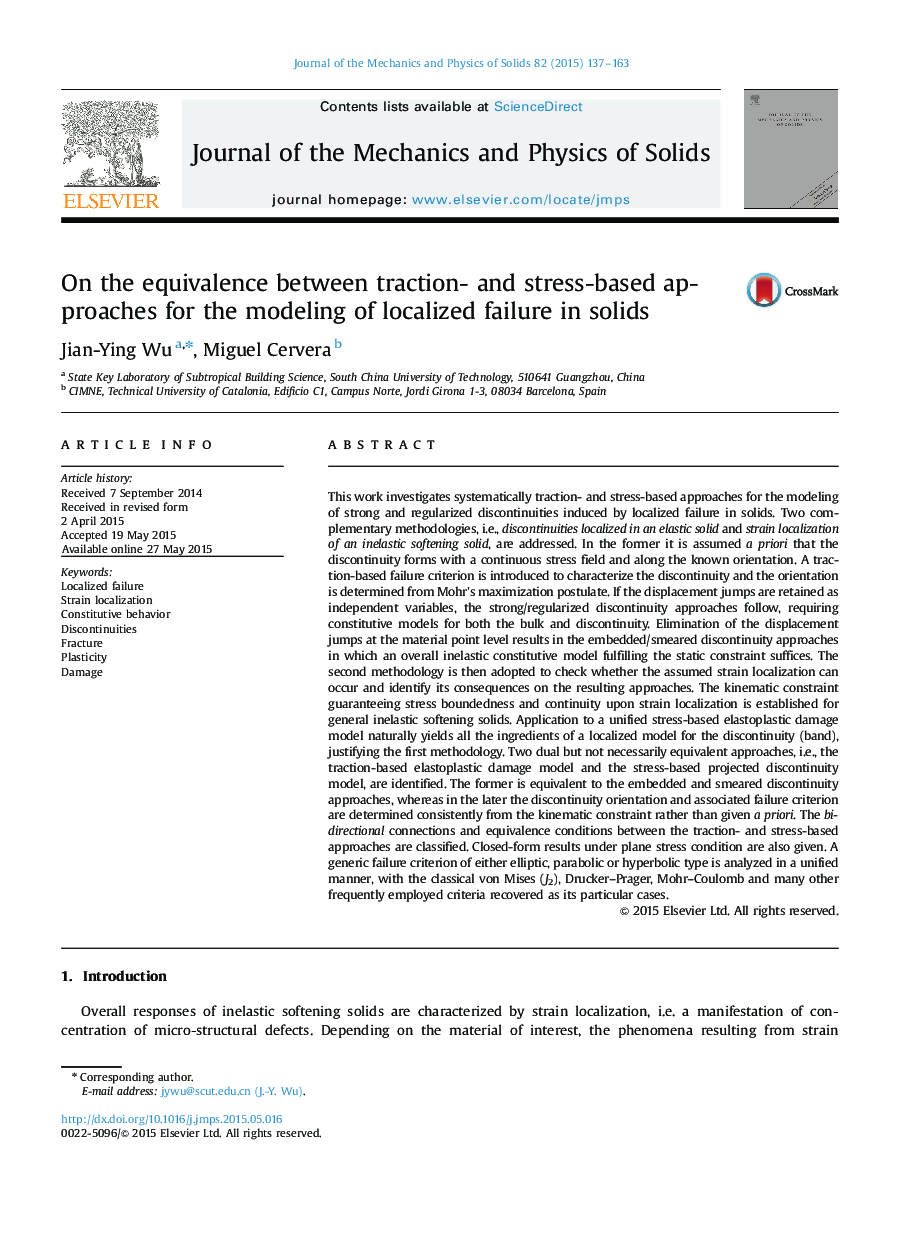| کد مقاله | کد نشریه | سال انتشار | مقاله انگلیسی | نسخه تمام متن |
|---|---|---|---|---|
| 7177990 | 1467061 | 2015 | 27 صفحه PDF | دانلود رایگان |
عنوان انگلیسی مقاله ISI
On the equivalence between traction- and stress-based approaches for the modeling of localized failure in solids
ترجمه فارسی عنوان
در همگرایی بین رویکردهای کشش و استرس برای مدل سازی شکست محلی در مواد جامد
دانلود مقاله + سفارش ترجمه
دانلود مقاله ISI انگلیسی
رایگان برای ایرانیان
کلمات کلیدی
شکست محلی محلی سازی فشار، رفتار سازمانی، عدم انطباق، شکستگی، پلاستیک خسارت،
موضوعات مرتبط
مهندسی و علوم پایه
سایر رشته های مهندسی
مهندسی مکانیک
چکیده انگلیسی
This work investigates systematically traction- and stress-based approaches for the modeling of strong and regularized discontinuities induced by localized failure in solids. Two complementary methodologies, i.e., discontinuities localized in an elastic solid and strain localization of an inelastic softening solid, are addressed. In the former it is assumed a priori that the discontinuity forms with a continuous stress field and along the known orientation. A traction-based failure criterion is introduced to characterize the discontinuity and the orientation is determined from Mohr's maximization postulate. If the displacement jumps are retained as independent variables, the strong/regularized discontinuity approaches follow, requiring constitutive models for both the bulk and discontinuity. Elimination of the displacement jumps at the material point level results in the embedded/smeared discontinuity approaches in which an overall inelastic constitutive model fulfilling the static constraint suffices. The second methodology is then adopted to check whether the assumed strain localization can occur and identify its consequences on the resulting approaches. The kinematic constraint guaranteeing stress boundedness and continuity upon strain localization is established for general inelastic softening solids. Application to a unified stress-based elastoplastic damage model naturally yields all the ingredients of a localized model for the discontinuity (band), justifying the first methodology. Two dual but not necessarily equivalent approaches, i.e., the traction-based elastoplastic damage model and the stress-based projected discontinuity model, are identified. The former is equivalent to the embedded and smeared discontinuity approaches, whereas in the later the discontinuity orientation and associated failure criterion are determined consistently from the kinematic constraint rather than given a priori. The bi-directional connections and equivalence conditions between the traction- and stress-based approaches are classified. Closed-form results under plane stress condition are also given. A generic failure criterion of either elliptic, parabolic or hyperbolic type is analyzed in a unified manner, with the classical von Mises (J2), Drucker-Prager, Mohr-Coulomb and many other frequently employed criteria recovered as its particular cases.
ناشر
Database: Elsevier - ScienceDirect (ساینس دایرکت)
Journal: Journal of the Mechanics and Physics of Solids - Volume 82, September 2015, Pages 137-163
Journal: Journal of the Mechanics and Physics of Solids - Volume 82, September 2015, Pages 137-163
نویسندگان
Jian-Ying Wu, Miguel Cervera,
